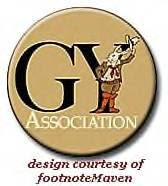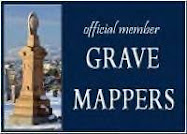Cemeteries can tell us much about our ancestors. Information can be gleaned from the words carved on headstones. We can learn a great deal concerning family relationships from the placement of a grave within the cemetery itself.
As more and more researchers venture into cemeteries to seek out ancestral graves, questions arise about the meanings of the artwork and symbols found on the tombstones. The researcher wants to know what a symbol might mean and if the meaning of the symbol might provide more clues about this ancestor and his life, ideals, associations, etc. Can reading and understanding these symbols help us gauge and unravel some quintessential element of this ancestor’s life?
Understanding the Symbols
The task of interpreting the symbols on a tombstone is a daunting one. Though most symbols engraved on a stone have a textbook meaning, it is possible that the particular item you find engraved on the tombstone is there simply because someone liked the look of it. Therefore, it will have no meaning beyond the taste of the deceased (if that person requested what was on the stone) or the preferences of those who choose the stone’s appearance. The point is, many people who choose grave motifs have no idea that the ornamentation they select has meaning. What they do know is that they like the design and feel it is just somehow right. Also, the ideas of the person designing the monument cannot be known to us, so the true representation may never be ascertained.
At the same time, symbols can express ethnic identity, religious affiliation, association membership, or simply the predilection of the time or community. A symbol that was commonly used in one area might mean something completely different in another area. Therefore, it is important to understand the history of the area or of the time.
During your visit to the cemetery, you may or may not be able to interpret the meaning of the symbol on gravestones. Either way, you will enjoy the inherent beauty and workmanship involved in carving these intricate designs. Cemetery engravings are art in the truest sense of the word. The stonecutter was an artist, and some of the sculptures you’ll find in cemeteries are as beautiful as art found in the finest museums. I have only provided photos of a few of the hundreds of symbols you might encounter, I will attempt to add some new photos this spring when I return to the cemetery for more researching and documenting.
Alpha and Omega
The first and the last letters of the greek alphabet, and a biblical reference to Christ, in Revelation, being "the beginning and the end."
Anchor
Hope, steadfastness

Bellflower
Gratitude
Bird, flying
Indicates the flight of the soul to God.
Book
Often, represents the Bible, but, it can simply mean knowledge. An open book might signify an open heart or mind, open to the word of God. A closed book usually indicates a completed life.
Child, sleeping
A typical Victorian signifier of a child's grave.
Columbine
The Columbine is the Colorado state flower, and is common on grave markers in the state, even if it is not found much outside of the state, it is said to indicate gentleness.
Column, broken
Sorrow, broken life
Cup
A symbol of the Eucharist, this example also has grapes and a vine, reinforcing the meaning.
Fish
Often associated with Christ, with early Christian imagery and part of its coded language, it also indicates bounty, or plentifulness.
Gates, Portals
The entrance to the world beyond the earth, the entrance to heaven.
Hand, pointing up
Usually indicates that the deceased has ascended into the heavenly realm.
IHS
This monogram represents the first 3 letters for "Jesus" in the Greek alphabet. In some cases, the letters are overlaid, to create the icon seen to the right. Not to be mistaken for a dollar sign.
Lamb
Often a symbol of Christ, also, innocence. This is the most common Victorian marker for a child's tombstone.
Lily
A Lily is an image of purity, but can also be a symbol of Easter, or the resurrection. Lilies were often used for funerals due to their strong scent which tended to help disguise less pleasant aromas. Note in the example, there are three lilies. Three of anything is usually an allusion to the Trinity.
Lily of the Valley
Lilies of the Valley, in cemeteries, tend to represent renewal and resurrection, as they are among the first flowers to bloom in the spring. They can also be a symbol of submitting to God's will, innocence and purity.
Lyre
A lyre is the instrument of Apollo. It could also be referencing the harp, which is a symbol of heavenly music, or hopes of heaven. These types of stringed instruments are often seen as the root of divine music. A harp could also indicate someone of Irish heritage.
Oak Leaves
Oaks are symbols of many things. Strength, endurance, faith and virtue are but a few of these. The oak speaks to the steadfastness of belief, even through tough times. Some believers think that Christ's cross was made of oak. The oak tree is considered sacred to many cultures.
Olive Branch
Most people understand an olive branch as a symbol of peace. It can also be meant as fruitfulness, purification, and victory.
Rooster
A rooster usually indicates vigilance. Roosters were put on weather vanes to "watch" against evil.
Rose
Roses are known for their fragrance and their beauty. Often they are emblems of the brevity of life or sorrow. In Christian iconography white roses indicate purity, red roses can signify martyrdom.
Ship
A ship is sometimes a representation of the church. It can also simply indicate a life on the sea, as a fisherman or other sailor.
Thistle
The thistle is a reminder of the inevitability of death, or remembrance. It is also commonly used to indicate a person of Scottish descent.
Torch
A torch, as something which illuminates the darkness, represents enlightenment. It can also indicate zeal, liberty or immortality.
Torch, inverted
If the inverted torch has a flame, it indicates that life is continuing after death. If there is no flame, it means the extinction of life and mourning.
Tree Trunk, usually broken
Premature death
Urn, draped
Anything draped indicates mourning. An urn typically represents the soul, or mortality. The drape can also be an allusion to the "veil" between this world and the next.
Weeping Willow
It may be obvious, but, this tree is an image of mourning. In some cultures, it also indicates immortality.
Wheat Sheaves
An emblem of the divine harvest. If paired with grapes, it's a symbol of the Eucharist.
Wreath
Victory in death. In Christian imagery, it is an indestructible crown worn by the triumphant believer.
Fraternal Organizations
Symbol, Meaning Picture
Independent Order of Oddfellows
The Independent Order of Oddfellows are primarily associated with the three links of a chain. Each "link" in their chain represents their motto "Friendship, Love and Truth," and often the letters "F, L, T" are inscribed within a link each. The order is sometimes referred to as "the poor man's Freemasonry," as the organization shares many of the symbols, such as the all-seeing eye, with the Freemasons. In this example, note the palm fronds flanking each side of the image. Palm fronds represent victory, and, in Christian contexts and cemeteries, it carries the idea of "Victory in Death."
Knights of Pythias
A heraldic shield with a suit of armor, or any of these with the letter F C B indicate a member of the Knights of Pythias. The letters stand for "Friendship, Charity and Benevolence The Knights of Pythias were fond of symbols, and commonly used more than 20,000 different ones within their organization.
Knights Templar
It is said that the original Knights Templar founded the Freemasons. The symbol, a Maltese cross with the cross and the crown, includes the latin phrase "In Hoc Signo Vinces," which translates to "In This Sign, Conquer"
Shriners
The Shriners are an organization only open to 32nd Degree Master Masons and Knights Templar. Their icons often include the scimitar and other appropriated middle eastern designs.
Woodman of the World
The latin motto of the Woodman of the World, "Dum Tacet Clamat" translates as "Though silent, he speaks," a particularly fitting statement for cemetery art. The Woodman of the World is an insurance company, that originally insured men in particularly dangerous occupations. In the 1920s, an insurance policy with the Woodman also included a grave marker. Most of these came in the form of trees. While not every tree-shaped monument a cemetery belongs to a Woodman of the World, many do. To the Woodman, the tree stump indicated equality. Note that the example also includes a dove with an olive branch, representing peace, and an axe and wedge, indicating woodcraft/craftsmanship.
http://www.colorado-cemeteries.com/symbols.html
Art and Meanings
Mortality
Arrow–mortality
Broken column–decay, loss of family head
Broken ring–severed family circle
Candle being snuffed–loss of life
Coffin–mortality
Figure with dart–mortality
Grim reaper–death personified
Hourglass–time has run out
Scythe–death cuts us down
Skull, crossed bones–death
Spade, crossed spade and shovel–death
Religious
Angels–spirituality and tomb guarding
Holy books (1)–Christianity
Chalice–sacraments
Cherub–angelic innocence
Crescent–Islam
Crown–glory of life after death
Cross–faith (There are many different types of crosses, and each may represent something different. For a good explanation of the various types of crosses, see a part of the City of the Silent web site.
Heart (sacred)–suffering of Christ
Menorah–Judaism
Star of David–Judaism
Plants
Fruits–eternal plenty
Full rose–death in the prime of life
Ivy–friendship and immortality
Laurel–worldly accomplishment and heroism
Lily–innocence and purity, the virgins’ flower
Morning glory–beginning of life
Oak, oak leaves, and acorn–power, authority, or victory (Often seen on military tombs.)
Palm branch–victory and rejoicing
Poppy–eternal sleep
Roses–completion, brevity of earthly existence
Rosemary–remembrance
Thistle–remembrance, or Scottish descent
Trees
Tree–life
Sprouting tree–life everlasting
Tree trunk–brevity of life
Stones shaped liked tree stumps–Woodman of the World
Weeping willow–perpetual mourning, grief
Wheat strands or sheaves–divine harvest
Hand, pointing upward–pathway to heaven
Hands, clasped–farewells or the bond of marriage
Hands, praying–asking God for eternal life
Hands, blessing–blessing for those left behind
Harp–praise to God
Heart–love
Joined hearts–marriage
Rod or staff–comfort for the bereaved
Stars and stripes around eagle–eternal vigilance and liberty (Often seen on military tombs.)
Urn with flame–undying remembrance
Animals
Birds–eternal life, resurrection
Butterfly–short life
Dog–good master worthy of love
Dove–innocence, peace
Lamb–innocence, usually a child’s grave
Lion–courage, eternal guarding
Rooster–awakening, resurrection
Resurrection, Eternal Life, Immortality
Angel, flying or trumpeting–rebirth, resurrection
Bird (dove) or bird flying–eternal life, resurrection
Cross–resurrection
Flame, light, lamp, torch–immortality of the spirit, resurrection
Garland or wreath–saintliness, glory, victory in death
Horns–resurrection
Ivy–immortality
Star–death could not overpower the light
Sun–light, warmth, renewed life, life everlasting
Trumpeters–harbingers of the resurrection
Urn–immortality (The storing of the vital organs was of extreme importance to the ancient Egyptians who believed that life would be restored through the vital organs placed in the urn.)
Trade and Occupation
Anchor, sextant, or cross staff–mariner
Axe, steel knife, or cleaver–butcher
Bible–minister
Bowl and razor–barber
Compasses–shipwright
Coulter (hoe), flail (threshing implement)–farmer
Crossed swords–military, high rank
Crown, hammer, anvil–blacksmith
Leather cutter’s knife, nippers, or awl–shoemaker
Loom, shuttle, or stretchers–weaver
Open book–teacher
Rake and spade–gardener
Scales–merchant
Stalk of corn–farmer
Swingletree (rod for beating flax)–farmer
Wedge and level–mason
Wheel–wheelwright
Sources :
http://www.colorado-cemeteries.com/symbols.html
http://www.vintageviews.org/vv-tl/pages/Cem_Symbolism.htm
http://www.everlifememorials.com/v/headstones/cemetery-symbolism.htm
http://www.memorials.com/Headstones-Symbolism-information.php
http://en.wikipedia.org/wiki/United_States_Department_of_Veterans_Affairs_emblems_for_headstones_and_markers
http://spiderbites.nytimes.com/free_1884/articles_1884_03_00000.html
http://spiderbites.nytimes.com/



































































